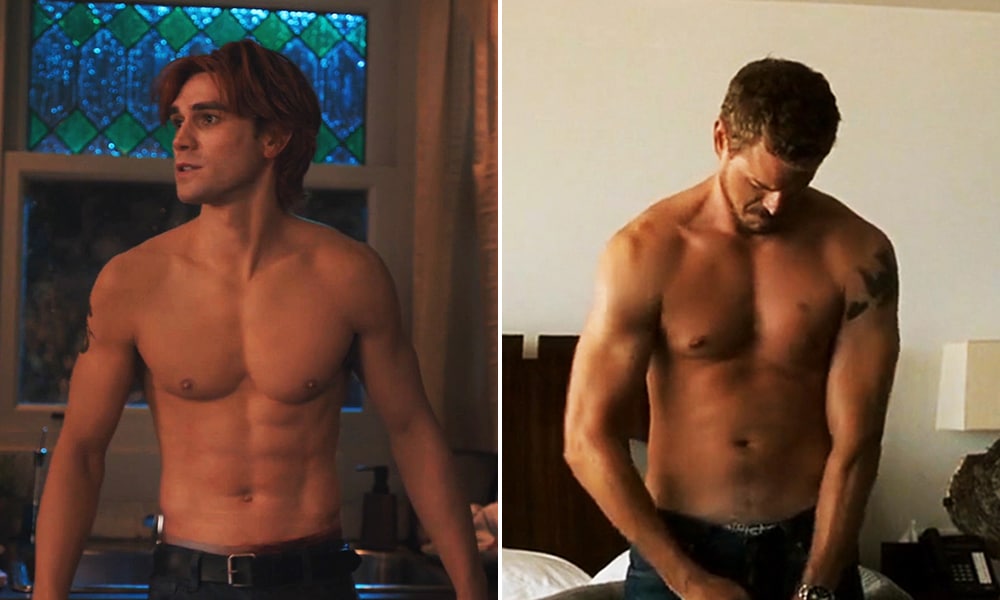Author: Gayety Staff
-
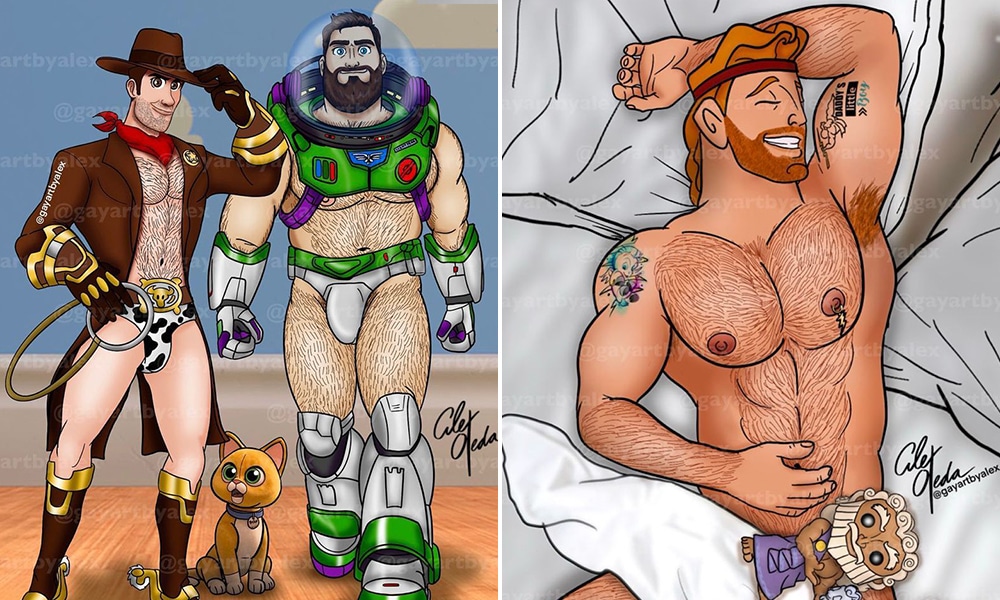
16 Times This Artist Yassified Your Favorite Cartoon Characters
They weren’t always gay, they’re just drawn that way.
One thing about us is that we will unashamedly like almost every illustration we see of a cartoon character made gay. We may have developed a bit of a reputation for our love of gay Disney princes and Disney villains. Well, you can add Mexican artist Alex Ojeda to our list of favorite illustrators. Ojeda isn’t limiting himself to yassified Disney characters either. His roster includes comic book characters and the Scooby Doo gang. He even illustrates versions of live-action characters from Harry Potter to Marvel.
Today, however, is all about the cartoon characters—some of whom will likely give you that familiar pang of nostalgia. In an interview with Out, Ojeda explained that he draws inspiration from his love of Disney, cartoons from the 80s and 90s, superheroes, and Japanese anime. “Making sensual fusions between these themes has always pleased me,” he said. When asked about the Disney characters specifically, Ojeda explained that they were the stuff of dreams. “I imagined that when the princesses went to sleep, the princes got together to play with each other at private parties in a gay environment,” said Ojeda. “They stopped being the good guys and became the naughty guys. Who wouldn’t want to go play with them?”
If you’d like to see Ojeda’s entire body of work, some of which is a bit spicier than what we could include here, make sure to follow him on Instagram, @gayartbyalex. Keep scrolling to enjoy a sneak peek.
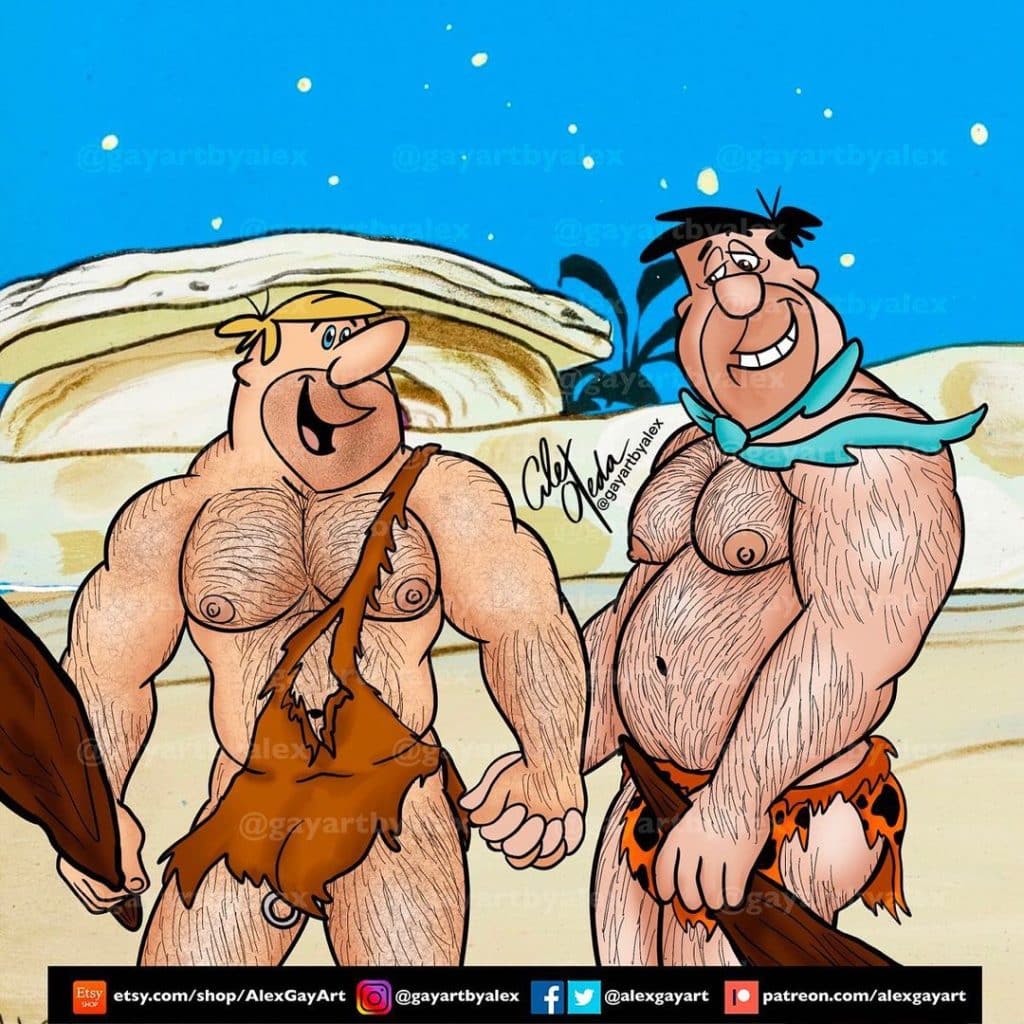
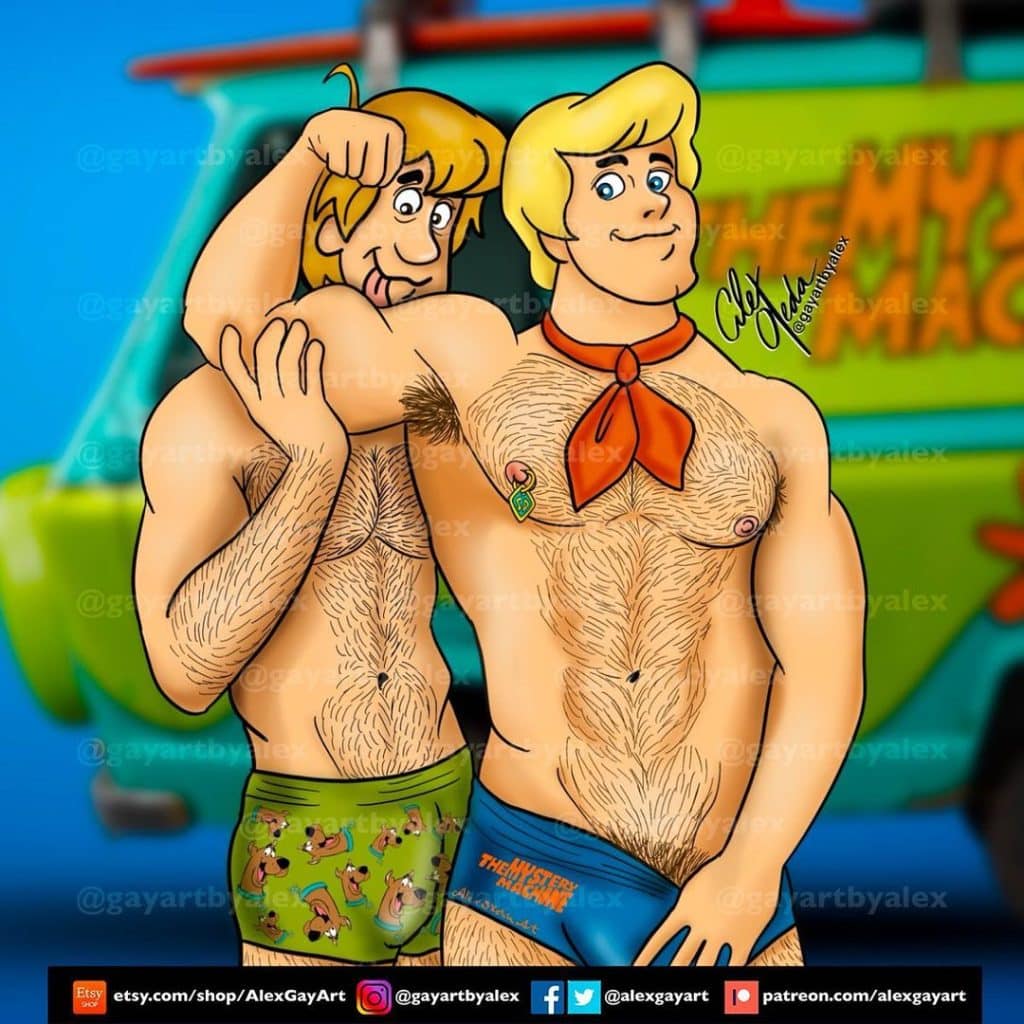
Related | Here’s What Disney Princes Would Look Like in Real Life


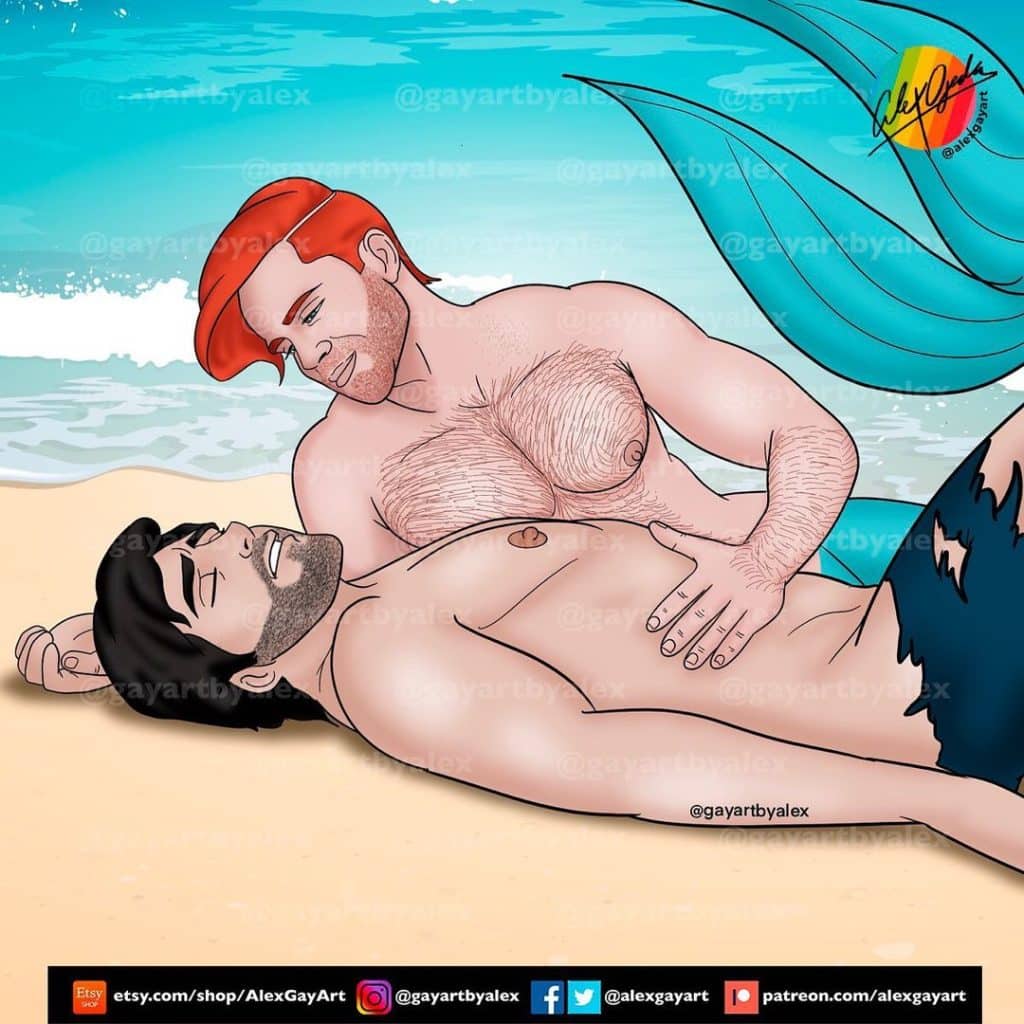

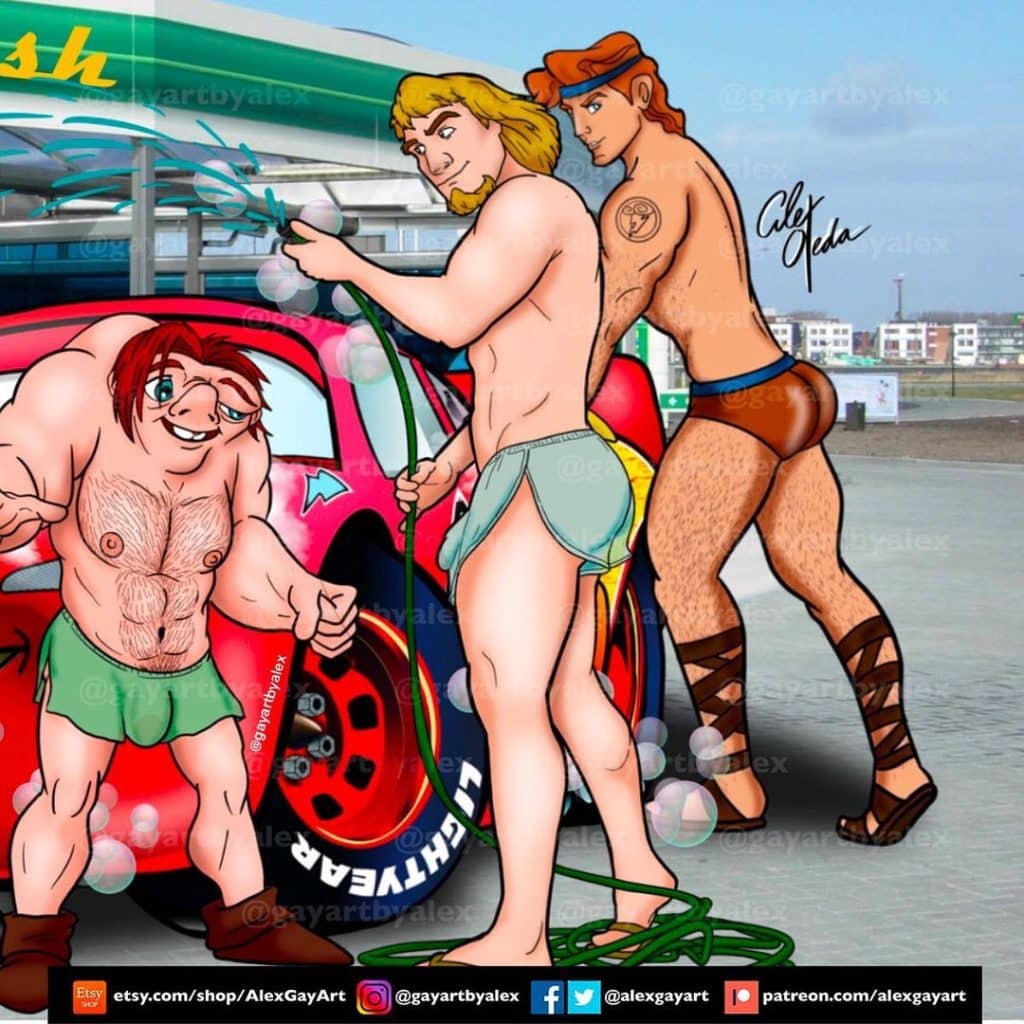

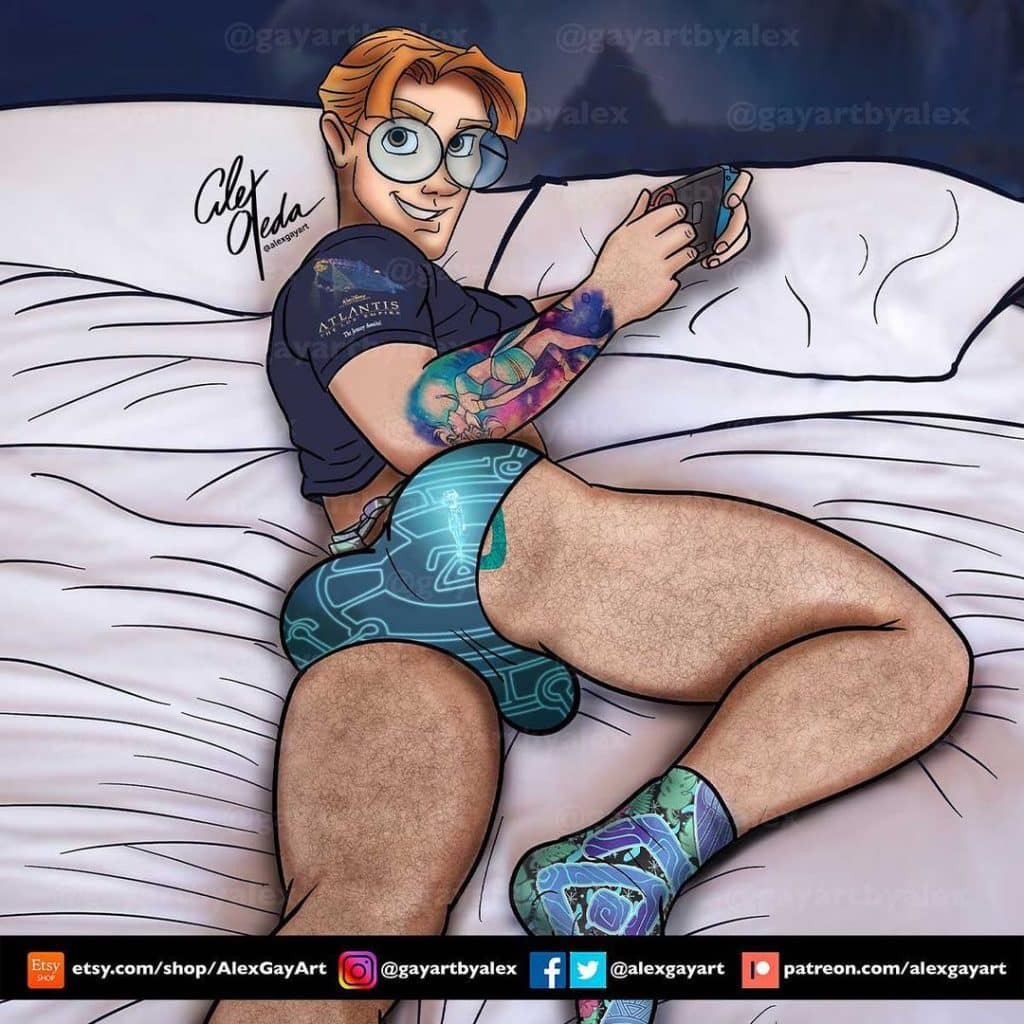
Related | 6 Disney Characters Reimagined As Queer AF
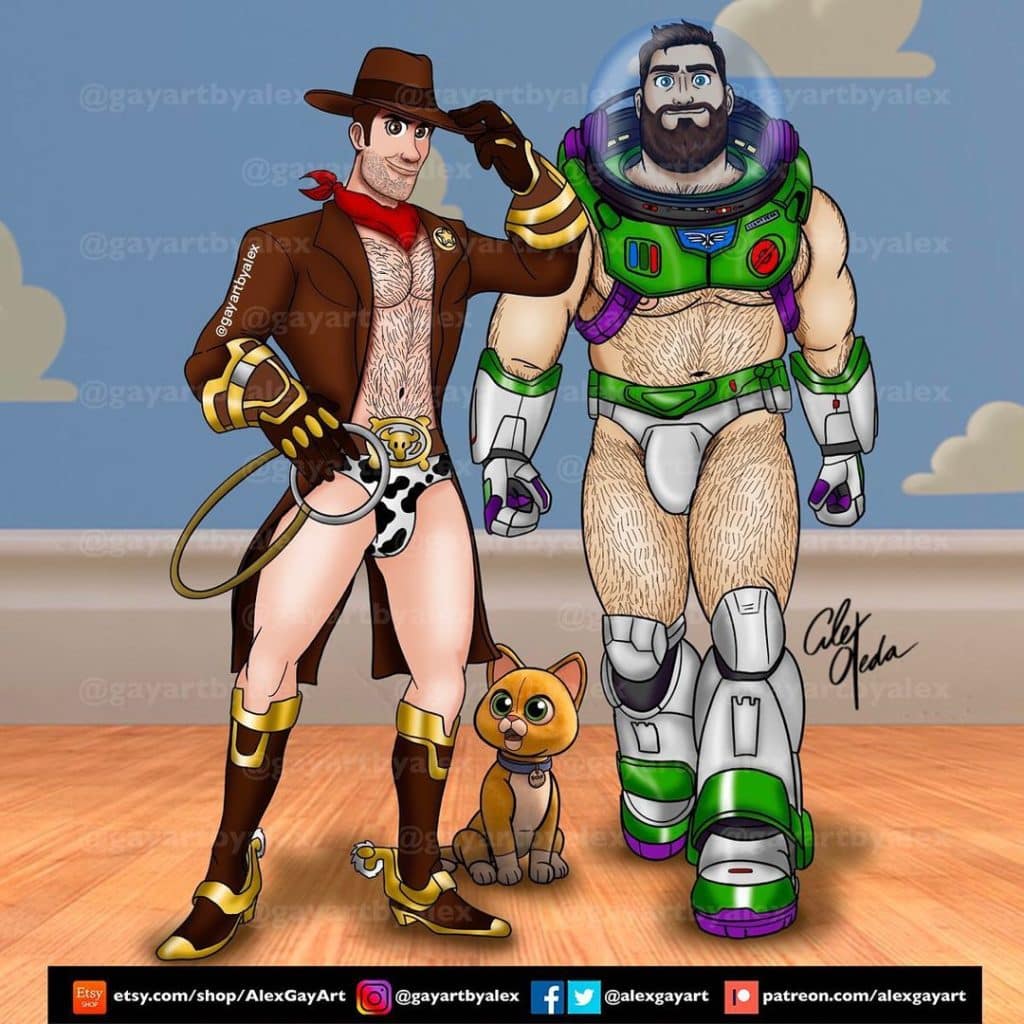
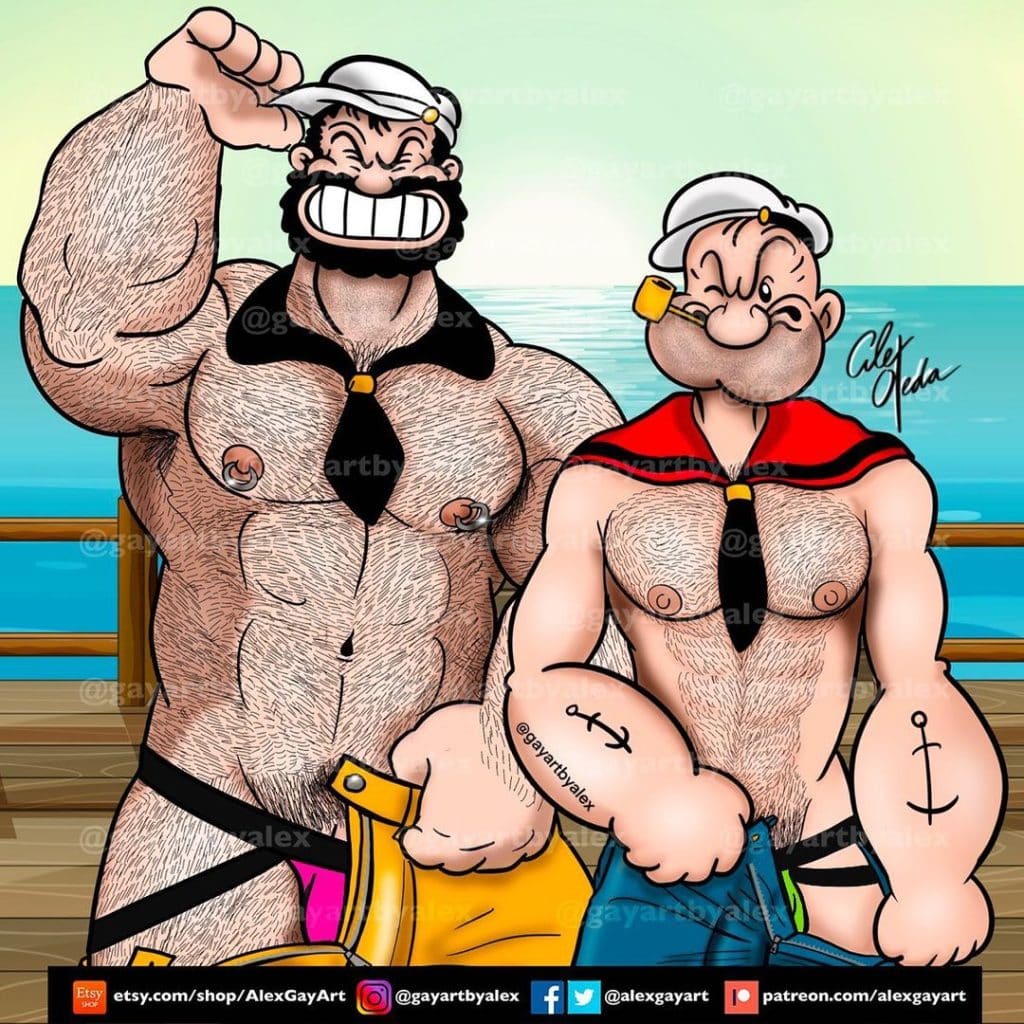


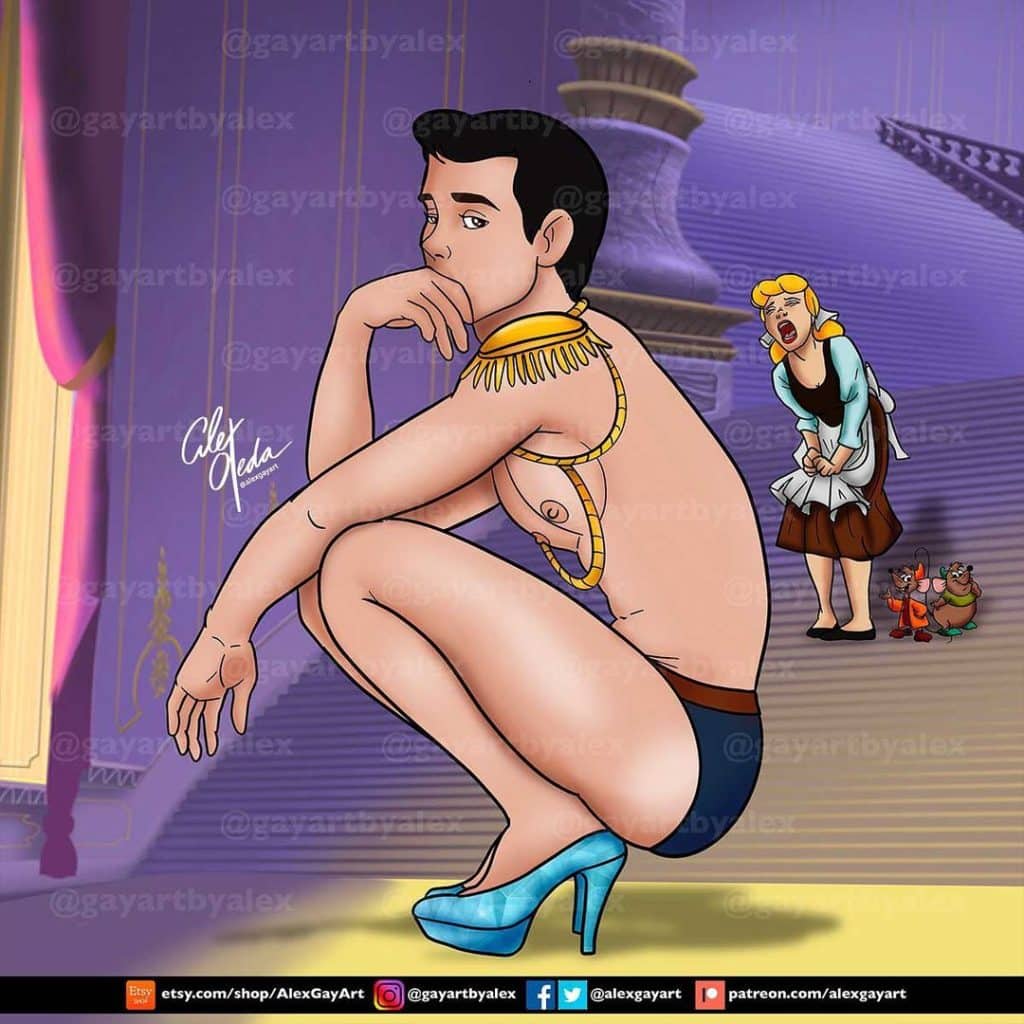

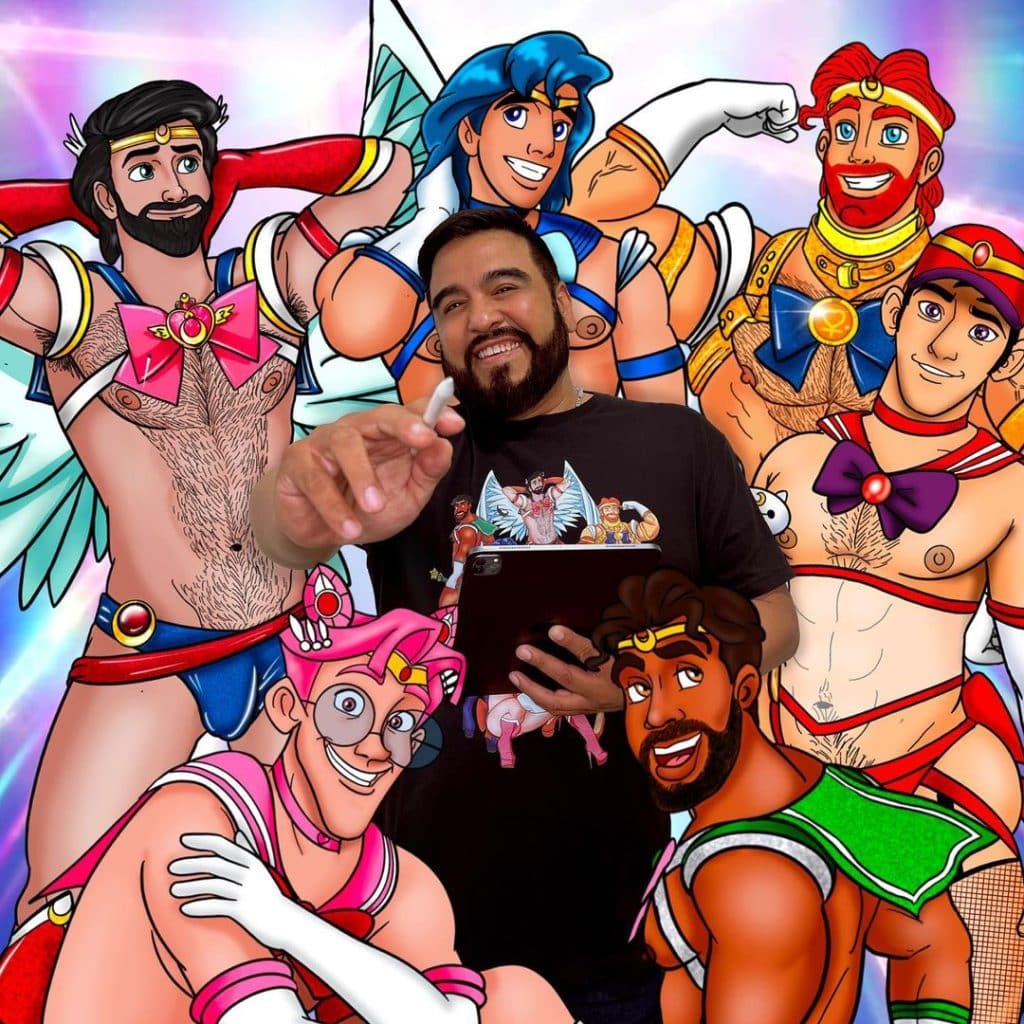
All images by Alex Ojeda on Instagram
-
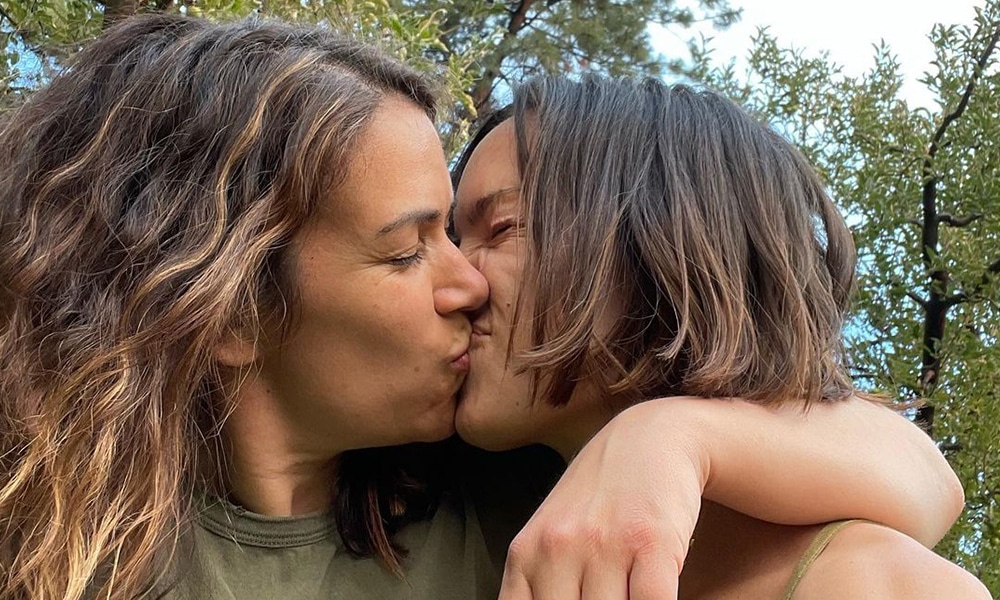
Broad City’s Abbi Jacobson Announces Engagement to Jodi Balfour
Congratulations to the happy couple!
-
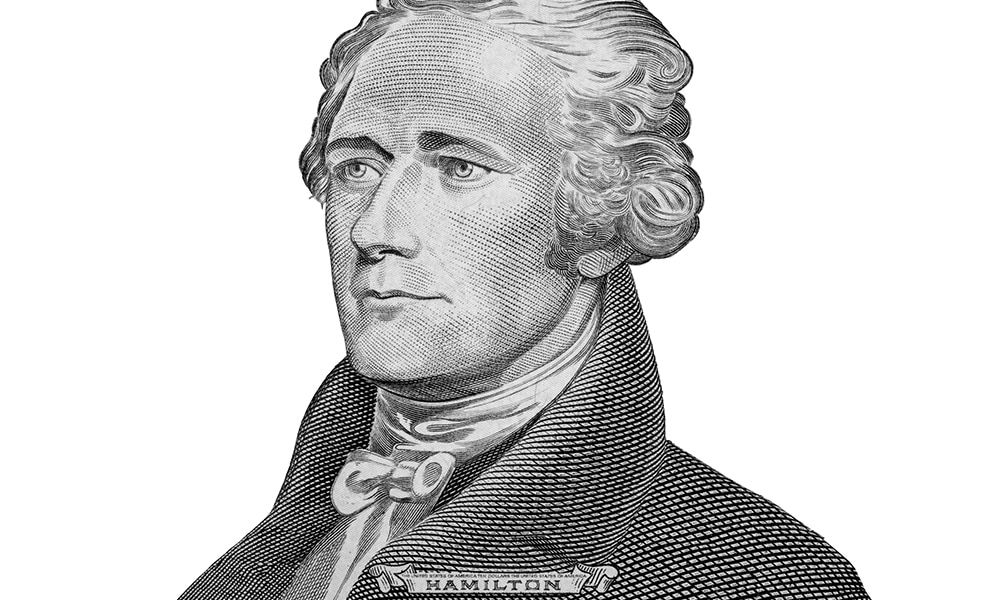
The Truth About Alexander Hamilton: Gay Or Bi?
Founding father Alexander Hamilton is remembered today as one of America’s greatest early statesmen and a revolutionary war hero. His colorful life was recently the subject of the award-winning musical Hamilton, written by Lin-Manuel Miranda. Hamilton’s affair with Maria Reynolds was pivotal in the story, but one special relationship was omitted from this production: his extremely close friendship with another man.
Was Alexander Hamilton bisexual, gay, or straight? Read on to learn more about Alexander Hamilton, his sexuality, and the whispers behind his relationships.
RELATED: Was Abraham Lincoln Gay, Straight, Or Bi?
Who Is Alexander Hamilton?
Alexander Hamilton was a Founding Father of the United States and an American revolutionary. He is best known for helping draft the United States Constitution and serving as America’s first Secretary of the Treasury. His significant achievements include founding America’s national financing system, the New York Post, and the U.S. Coast Guard.
He is also infamously remembered as the first American politician to be embroiled in a political sex scandal. Despite the public humiliation of the Reynolds Affair, Hamilton was able to remain active in American politics. In 1804, Hamilton even helped Morgan Lewis defeat the American Vice President, Aaron Burr, in New York’s gubernatorial election.
Soon after, the Albany Register published letters that claimed Hamilton had bad-mouthed Burr several times. Burr took this as an attack on his honor and challenged Hamilton to a duel. The shot was fatal, ending the life of one of America’s most colorful and charismatic statesmen.
“A toast to the groom! To the bride!” On this day in 1780, Elizabeth Schuyler married Alexander Hamilton. #Helpless pic.twitter.com/dOZVVRgfxd
— Hamilton (@HamiltonMusical) December 15, 2015
Hamilton Was Married And Had A Prominent Affair
Alexander Hamilton was known even during his lifetime for his love of women. He married Elizabeth Schuyler, a socialite from one of New York’s most prominent families. The couple had eight children; after his death, Elizabeth Schuyler remained as devoted as ever and worked to organize his writings. She also had his biography published despite numerous challenges.
Shockingly, she was allegedly not the first Schuyler that Hamilton had been romantically involved with. He was rumored to have had an affair with her older sister Angelica before his marriage, and their correspondence was said to have been flirtatious for the times. While modern historians have dismissed it as little more than gossip, this potential relationship was still depicted as truth in the musical Hamilton.
Alexander Hamilton later found himself in hot water when an old affair was exposed. In 1791, he became involved with a married woman named Maria Reynolds. Her husband James Reynolds knew about the affair and used it to blackmail Hamilton for money.
Six years later, Democratic congressman James Monroe confronted Hamilton, mistakenly assuming that the payments he made to Reynolds were due to treasury misconduct. Hamilton revealed the blackmail letters and wrote the Reynolds Pamphlet to clear himself of corruption charges.
The pamphlet was his attempt to exonerate himself, but he also used it to give multiple justifications for his infidelity. In one intriguing section, he claims Maria Reynolds was too difficult to resist because “the variety of shapes her body could assume were endless.”
Lord, show me how to say no to this…@courtneymaeb as Maria Reynolds and @JamWestman as Alexander Hamilton. Photo by: @MurphyMade.https://t.co/tnMWYLtTuw pic.twitter.com/tsCjc7cEpz
— Hamilton West End (@HamiltonWestEnd) July 9, 2019
John Laurens: Just A Good Friend?
Scholars have pointed to his close friendship with John Laurens and speculated that they may have been in a homosexual relationship. Laurens was a member of George Washington’s staff and served as a lieutenant colonel in the revolutionary army. During the American Revolutionary War, Laurens and Hamilton became fast friends and maintained their friendship through years of correspondence.
A letter he wrote to Laurens in April 1779 hints at the warmth of their feelings. Hamilton wrote, “Cold in my professions, warm in my friendships, I wish, my Dear Laurens, it might be in my power, by action rather than words to convince you that I love you.”
Even after he married Elizabeth Schuyler, Hamilton’s emotionally charged correspondence to Laurens continued. He wrote to him in September 1779, “In spite of Schuyler’s black eyes, I have still a part for the public and another for you. So your impatience to have me married is misplaced; a strange cure, by the way, as if after matrimony I was to be less devoted than I am now.”
Critics have said that this was merely the typical, flowery language that was commonly used at the time, and their relationship was purely platonic. However, one can’t help but wonder, especially since several of Hamilton’s children allegedly tried to hide parts of their letters.
View this post on InstagramWas Alexander Hamilton Gay? The Bottom Line
It’s hard to say for sure if Alexander Hamilton was bisexual, gay, or straight. Because homosexuality was harshly punished in those days, Hamilton might have concealed the truth about his feelings for Laurens.
However, it has to be noted that he stayed married to Elizabeth Schuyler and was known as a ladies’ man during his lifetime. While his letters may continue to intrigue historians with possibilities, all we can do with this limited evidence is speculate!
-

Republicans Favor Hurting Trans Kids Over Feeding Hungry Ones
And they call themselves the party that “protects children.”
-

The Truth About Harley Quinn, Bisexual Icon
Moviegoers fell in love with the scene-stealing Harley Quinn in Suicide Squad (2016), but they weren’t such big fans of her dark relationship with the Joker. In contrast, the 2020 film Birds of Prey was a refreshing take, showing a more empowered Harley Quinn. There was an interesting detail in the film that eagle-eyed comic fans spotted. A moment that makes audiences wonder: is Harley Quinn a lesbian, bi, or straight?
Read on to learn more about Harley Quinn, her sexuality in the DC films and comics, and her relationships!
RELATED: Did Batman Just Confirm His Bisexuality?
Who Is Harley Quinn?
Harley Quinn is a DC comics character. She was initially created as the Joker’s henchwoman and love interest in the Batman universe. Because of her popularity, she eventually became a recurring character.
Her origin story introduces her as the Joker’s former psychiatrist in Arkham Asylum, then known as Dr. Harleen Quinzel. Dr. Quinzel fell in love with the Joker during their sessions, eventually becoming his accomplice and romantic partner, Harley Quinn. Later comic storylines showed Quinn becoming weary of her abusive relationship with the Joker. These comics developed her storylines and shaky alliances with Catwoman and Poison Ivy.
Quinn is shown to be a skilled gymnast, proficient with hand-to-hand and armed combat, and immune to most toxins. Her signature weapon throughout the DC comics is a comically large mallet. As a trained psychiatrist, she’s also skilled at manipulating and tricking her enemies.
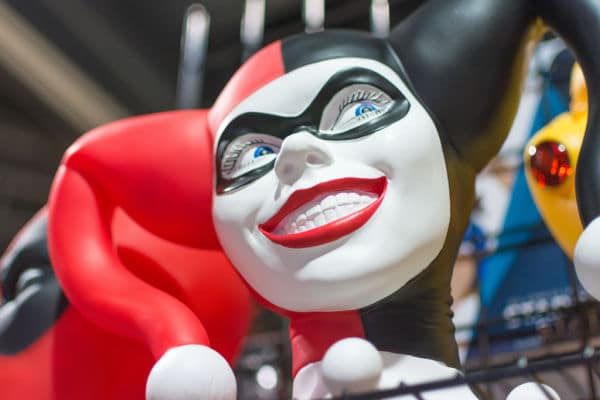
betto rodrigues/shutterstock.com Is Harley Quinn Bisexual In The Comics?
Yes, Harley Quinn is bisexual in the DC comics. Quinn’s first appearance in print was in 1994’s The Batman Adventures: Mad Love. This graphic novel explored the origin of Quinn’s character, as well as her ties to the Joker. She has also flirted with Batman. It’s been hinted in Batman: White Knight that she is genuinely attracted to the Caped Crusader.
While this confirms her attraction to men, Harley Quinn also has a relationship with Poison Ivy in the comics. The two anti-heroines even got married in the Injustice timeline. This paved the way for the exploration of Quinn’s sexual identity in future film and comic storylines.
Is Harley Quinn A Lesbian, Bi, Or Straight In The Films?
Harley Quinn is bisexual in the DC films. Her first appearance in the DC Extended Universe is in Suicide Squad. Still, any hints at her romantic history here were focused solely on her relationship with the Joker.
DC casually confirmed that Harley Quinn is bisexual in Birds of Prey. The opening animated sequences show relationships with three people that didn’t work out: two men and a mysterious woman. There is an implication that her relationship with the latter that left Quinn feeling the most vulnerable and lonely. This set the stage for her relationship with the Joker.
This brief teaser may only be the beginning of the exploration of Quinn’s queer identity. Birds of Prey director Cathy Yan has mentioned in interviews that she’s interested in showing Quinn and Poison Ivy’s relationship in future films.
Margot Robbie, who played Harley Quinn in both Suicide Squad and Birds of Prey, has also said she’s interested in doing a Gotham City Sirens movie. If this is true, we’ll get to see Catwoman, Poison Ivy, and Harley Quinn on screen soon, and there’s a strong chance that audiences will see sparks fly between the two anti-heroines. It may be a risk for the DC Universe, but it may be the right move, considering the increasing audience clamor for more LGBTQ stories.

Ekaterina_Minaeva/Shutterstock.com The Toxic Relationship Between Harley Quinn And The Joker
Harley Quinn’s toxic relationship with Gotham’s Clown Prince of Crime is considered iconic by many fans. However, he is emotionally abusive towards Quinn, constantly belittling her and lashing out at her. He’s physically abusive to her, as well – he has even tried to kill her several times.
In the animated series The New Batman Adventures, Quinn successfully captures Batman by herself – a feat that has eluded the Joker for so long. Quinn’s driving motivation for this impressive crime was that she wanted to live a happy life with the Joker, and she believed that this was only possible if Batman was out of the picture. But instead of being grateful or impressed, the Joker beats Quinn and hurls her out a window.
The abusive nature of their relationship is driven home in the 2009 game Batman: Arkham Asylum, where the Joker says in a cutscene that slapping Harley Quinn around is “his hobby”. In the 1999 comic Batman: Harley Quinn, he tries to kill her with a rocket because he’s “gotten too attached to her”.
Harley Quinn’s Relationship With Poison Ivy
Harley Quinn has another relationship that rivals her relationship with the Joker: her love for Poison Ivy, a.k.a. the “Floral Femme Fatale”. The first hint that there’s something between them is in 1997’s Batgirl Adventures #1 when Batgirl asks if there’s anything more to Quinn and Poison Ivy’s closeness.
The comics have since shown the couple kissing in 2020’s Harley Quinn/Poison Ivy #6 and getting married in Injustice 2 #70. Harleen, written and reimagined by Stjepan Sejic in 2020, goes a step further by showing Poison Ivy comforting and kissing Quinn after she escapes the Joker.
View this post on InstagramIs Harley Quinn Bi? The Bottom Line
Harley Quinn is bisexual – her two most prominent relationships in the DC comics are with a man and a woman. Birds of Prey has already confirmed this, opening the door for later movies to explore her character’s sexuality. And because Quinn and Poison Ivy are openly bisexual in the comics, we’re hopeful that this romance will be given a chance to shine in future films.
RELATED: Harley Quinn Fans, Get Ready For Some More Queer Romance
-
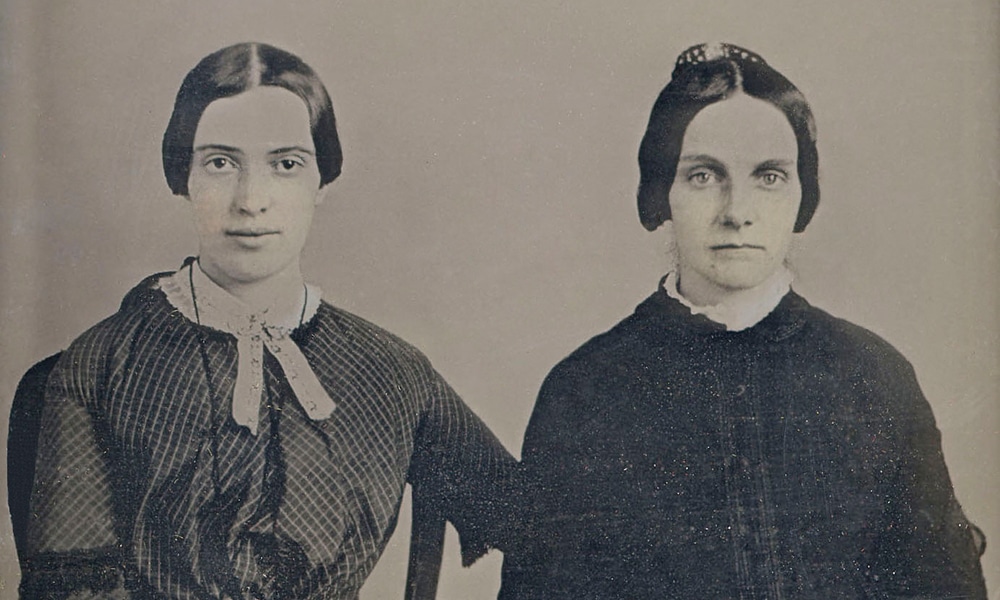
Was Emily Dickinson Gay? Analyzing The Evidence
Although LGBTQ people have existed since time immemorial, history has had a long, well, history of straightwashing key figures. Back when queerness was widely considered taboo, many would hide any evidence of their queerness out of fear of persecution. As such, it’s often difficult to confirm just how prevalent queerness was in the past. The same goes for whether some of the most notable names in art, literature, science, and politics were queer themselves.
Emily Dickinson, a prolific poet is often remembered as the eccentric shut-in who never married. She has also long been rumored to be among those historical figures whose queer identity may have been deliberately erased. Here, we take a brief look at the life and work of Emily Dickinson. We also find out whether there was more to this poet than meets the eye.
View this post on InstagramWas she really as reclusive and eccentric as she was made out to be? Was Emily Dickinson gay? Find out below.
RELATED: Was Abraham Lincoln Gay, Straight, Or Bi?
Who Is Emily Dickinson?
Emily Dickinson was an American poet born into a prominent family in Amherst, Massachusetts in 1830. She was a prolific writer, and wrote nearly 1800 poems in her lifetime. Despite this, she only published 10 poems while she was alive.
After her death and the subsequent publication of her manuscripts, Dickinson became known as one of the greatest American poets of all time. The Poetry Foundation describes Dickinson’s work as challenging “the existing definitions of poetry and the poet’s work” and compares her to the likes of Walt Whitman and Henry David Thoreau for experimenting with expression “in order to free it from conventional restraints”.
View this post on InstagramEmily Dickinson: Lesbian Icon?
So, what makes fans and scholars think that Dickinson may have been gay? Here’s some of the evidence we’ve gathered:
Relationship With Susan Gilbert
Although there isn’t a lot of hard evidence that confirms Dickinson’s sexual orientation, those who study her work believe that several surviving letters written to Susan Gilbert Dickinson may suggest that she wasn’t straight.
Dickinson and Gilbert were incredibly close for most of their lives. They met when they were 19 and became best friends and eventually sisters-in-law. They wrote many letters to each other, particularly when Gilbert had to go away to Baltimore for 10 months to take up a teaching job.
A Letter to Susan
In one of her letters to Susan, Emily writes:
“Susie, forgive me Darling, for every word I say — my heart is full of you, none other than you is in my thoughts, yet when I seek to say to you something not for the world, words fail me. If you were here — and Oh that you were, my Susie, we need not talk at all, our eyes would whisper for us, and your hand fast in mine, we would not ask for language — I try to bring you nearer, I chase the weeks away till they are quite departed, and fancy you have come, and I am on my way through the green lane to meet you, and my heart goes scampering so, that I have much ado to bring it back again, and learn it to be patient, till that dear Susie comes.”
Seeking help to publish the poet’s remaining works after her death, Dickinson’s sister Lavinia approached Gilbert and later Mabel Loomis Todd, a woman who was also romantically involved with Susan’s husband, Austin Dickinson, at the time.
This, says the Emily Dickinson Museum, was a “momentous choice” for Lavinia. As Dickinsonian scholars would later find, given Todd’s involvement with Austin and her disdain for Susan, it was very well possible that Todd omitted and overwrote many crucial words from Emily Dickinson’s work – much of which detailed her rich inner life and her relationship with Susan.
View this post on InstagramHow TV And Film Bring The Dickinson-Gilbert Relationship To Light
Madeleine Olnek’s 2019 film Wild Nights With Emily explores the complicated family feud between the Dickinsons and the Todds, as well as Emily’s close relationship with Susan Gilbert.
Speaking to Montecristo magazine about her frustration over the blowback she received from critics over her portrayal of Dickinson as a lesbian, Olnek said she wrote a 30-page document detailing the evidence she found that Dickinson’s portrayal as a recluse that barely had any relationships (let alone queer ones) stemmed from both the Todd-Gilbert beef and attempts to protect her work from McCarthyism.
To understand the latter issue, remember that the 1950s were a time of heightened paranoia against anyone who might attempt to betray the American government to perceived communist threats. This paranoia, inspired by Senator Joseph McCarthy, led to the persecution of suspected “deviants”, including activists and LGBTQ people. Around that time, a book revealing more information about the poet, her work, and her alleged affairs with women had been published – and was perceived to be a threat to the beloved poet’s reputation.
“People were afraid Emily Dickinson was going to stop being taught in schools,” said Olnek. “They were afraid her legacy was going to be ruined and that people weren’t going to read her anymore. And it could be argued a lot of those same reasons are still as relevant today.”
Apple TV’s 2019 comedy-drama series Dickinson, on the other hand, is written as a coming-of-age story that explores Emily’s struggles with the constraints of being a woman poet during her time, familial expectations, and her burgeoning romance with Gilbert. The series is a modern, fictionalized retelling of Dickinson’s life and takes creative liberty to portray a tender and relatable romance between her and Gilbert.
View this post on InstagramThe Photo With Kate Scott Turner
One of the most recent pieces of evidence that point to Dickinson’s apparent queerness is a daguerreotype photo that is believed to feature the poet and a woman named Kate Scott Turner. It was taken around 1859 when the poet was about 30 years old. The photo surfaced after an anonymous collector brought it to Amherst College to be analyzed. The head of the archive and special collections Mike Kelly spoke to the Associated Press about the photo. He said that he’s “certain that the subjects in the daguerreotype are Dickinson and Turner”.
But what makes a photo of Dickinson next to this woman so interesting? As it turns out, after meeting and spending some time with Dickinson, Turner reportedly moved to Europe. There she lived as openly gay. This is believed to be what started rumors about the two in the first place. The discovery of the photo merely appears to confirm them.
The photo is also referenced in a scene in Olnek’s film. In an interview with Vox, Olnek says their relationship is “a lot harder to deny now,” because of this photo. “Like, there’s a picture. It’s a lot harder.”
So, Was Emily Dickinson A Lesbian?
While it’s difficult to say whether Dickinson was gay for sure, there is a lot we do know. She has had more than one “close” relationship with women throughout her lifetime. Despite attempts to stamp out these details, recent evidence tells us she wasn’t as straight as some historians suggest. Thanks to shows like Wild Nights With Emily and Dickinson, we can begin to imagine what Dickinson’s life might have actually been like.
RELATED: Everything You Should Know About Ancient ‘Romosexuality’
-

What Does Arosexual Mean?
In a world where everyone is more or less expected to desire sex and romance, the idea that one could be asexual or aromantic may seem rather odd. But asexual and aromantic people do exist — in fact, a whole spectrum of orientations and identities fall under the ace and aro umbrellas.
Here, we take a look at one such identity: “arosexual.”
Related | What Is the Questioning Flag?
Arosexual Meaning
Arosexual is a relatively new term that has only come up in recent years. The official arosexual definition is up for debate, as there are several interpretations of the word.
Some sources say that arosexual is a term that describes people who view sexual attraction and romantic attraction as mutually exclusive. In other words, they can only experience one or the other for each object of affection or potential partner. You may only feel sexually attracted to one partner but never romantically attracted to them and vice versa for another partner.
However, others believe that the term arosexual is a misnomer for aromantic asexual or aroace — an orientation that can be described as having no desire for or interest in both sexual or romantic experiences.

Maria Orlova / Pexels Asexual? Aromantic? What Do These Words Mean?
If all these words sound new to you, don’t worry. Here, we break down some of the concepts related to asexuality, aromanticism, and arosexuality.
Asexuality
The Asexual Visibility & Education Network (AVEN) describes an asexual person as someone who “does not experience sexual attraction”.
Asexuality is distinct from celibacy in that asexual people do not choose to abstain from sex. In that sense, asexuality is as much a sexual orientation as is being gay or lesbian. It is not something you can turn on or off.
It’s important to note that the asexual experience varies from person to person. Asexuality is a spectrum where people can identify between asexual and allosexual – the latter defined as people who experience sexual attraction.
Those who fall somewhere in the middle of the spectrum can identify with several different identities, including:
- Gray-asexual: Also called “graysexual” or “gray ace”, gray-asexual people are those who may experience sexual attraction to a limited extent.
- Demisexual: These are people who do experience sexual attraction but only after forming a strong emotional bond with another person.
- Aceflux: These are people who may fluctuate from asexual to sexual. Much like genderfluid people do not have a definite gender identity, aceflux people may find that their sexual attraction changes over time.
- Reciprosexual: These people can only be sexually attracted to people who reciprocate their feelings.
- Akoisexual: These people experience sexual attraction to others but do not wish for their attraction to be reciprocated. Once their feelings are reciprocated, they may feel that their attraction fades away.
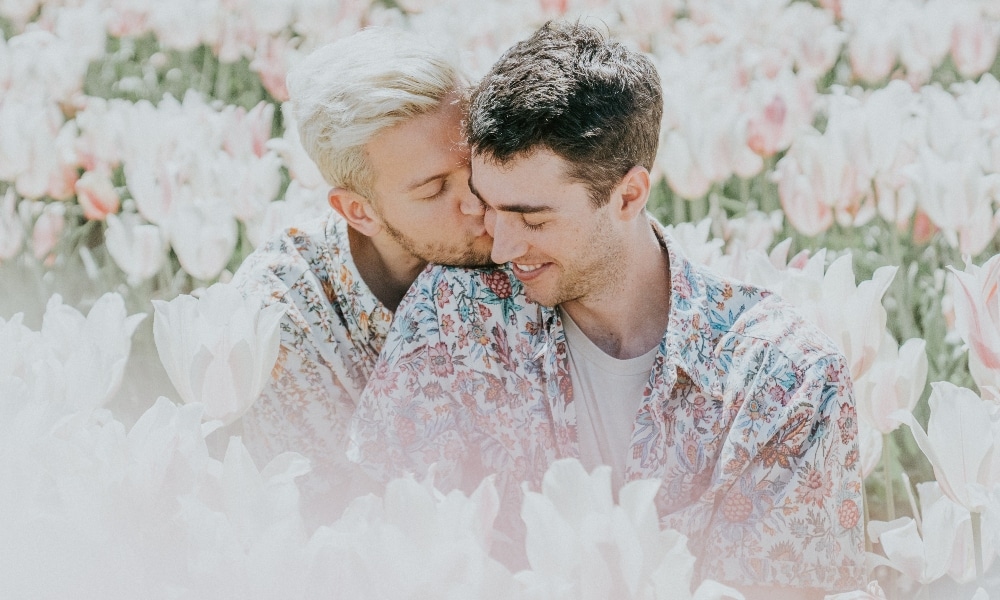
Cole Keister / Pexels Aromanticism
AVEN describes “aromantic” as people who are “not romantically attracted to or desiring of romantic relationships at all”.
Many people in the asexual community believe that sexual orientation differs from romantic orientation (to who you are romantically attracted). This is essentially the basis for the split attraction model, a theory that many in the ace and aro communities use to better explain their sexual orientations.
The split attraction model states that sexual attraction and romantic attraction are independent aspects of one’s orientation. Thus, people who identify as asexual do not necessarily identify as aromantic and vice versa. Asexual people can still develop romantic feelings and the desire to have romantic relationships with other people – they’re just not interested in the sexual aspect of being in a relationship. Or, in the case of gray ace and acespec people (i.e., people on the asexual spectrum), they can experience attraction and arousal to a certain extent and act upon those feelings in whatever way is most comfortable to them.
AVEN points out that romantic and sexual orientation differences are “by no means exclusive to asexual people”.
Aromantic Asexual
An aromantic asexual person or aroace is someone who experiences neither romantic nor sexual attraction to others. What does being aroace look like? Here are some signs:
- You experience little to no desire to enter sexual and romantic relationships with other people.
- You have never experienced falling in love and/or can’t relate to others when they talk about their experiences with dating, sex, and marriage.
- When someone flirts with you or asks you out, you feel neutral about it. Some aroace people may even feel repulsed by the idea of having sex, dating, or being in a relationship.
- You feel pressured to start having sex or seek out relationships because it is what is expected of you.
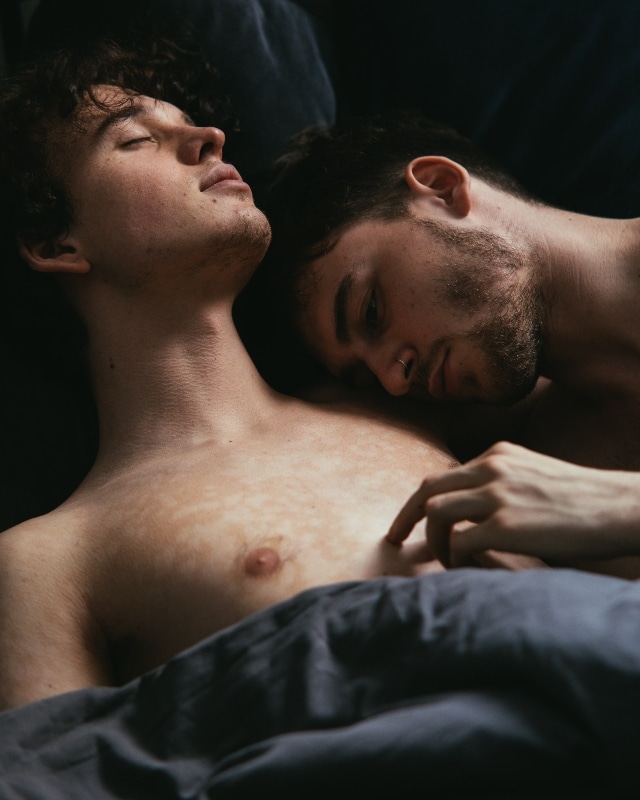
KoolShooters / Shutterstock The Bottom Line
Arosexual is a relatively new term that is used to describe people who view sexual and romantic attraction as mutually exclusive. It is also sometimes used to refer to people who identify as both aromantic and asexual. The exact meaning of the word remains unclear, however.
If you are looking for a term to describe your experience with sexuality and romantic attraction or a lack thereof, there are other terms out there (some mentioned above) that may be more helpful in defining yourself.
Related | Is Jughead From Riverdale Asexual?
-
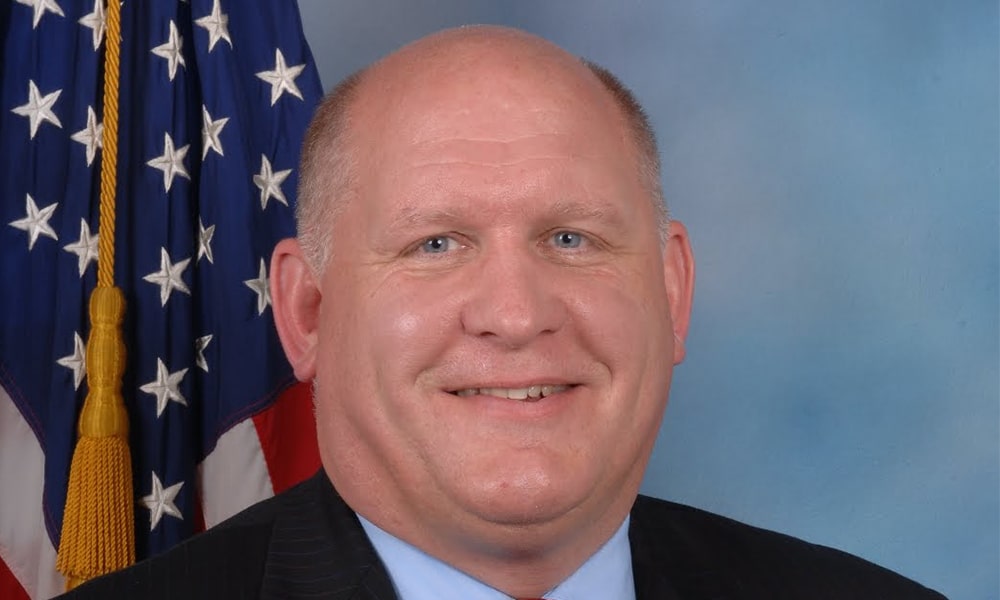
Republican Attends Gay Son’s Wedding Days After Voting Against Gay Marriage
Rep. Glenn Thompson attended his son’s wedding 3 days after voting against the Respect for Marriage Act.

